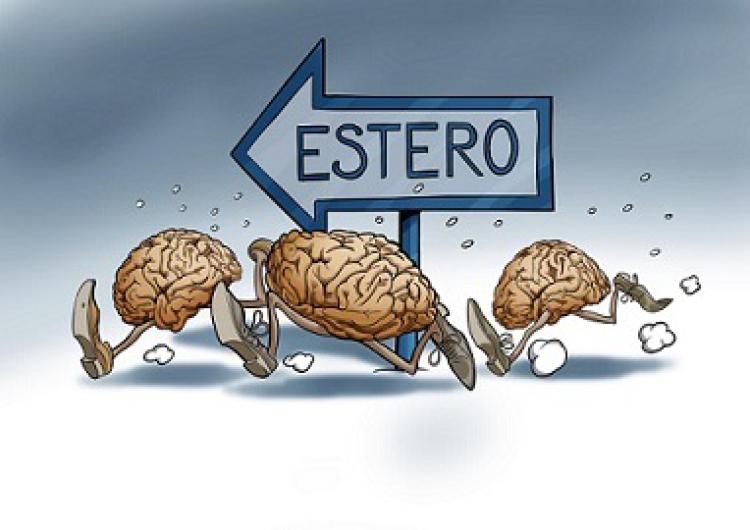Brains fleeing Italy–here are the latest estimates!
Our country spends about 4 percent of GDP (OECD estimates) on the entire education cycle of its citizens: nearly 69 billion euros, which is about 20 times the infamous Imu-Tasi on the first house abolished a few years ago.
In the past, someone has put the total public expenditure on the education of one or a young person finishing college at about 100 thousand euros.
Good, or rather very bad: because the fifth Istat Report on Fair and Sustainable Welfare, presented a few months ago, brings bad news.
For the first time, the “Bes” — which analyzes trends in the quality of life of citizens and the environment — includes among its indicators the country’s ability to retain talent. How? Using, as an indicator of graduate mobility, the specific migration rate: i.e., the ratio of the migration balance of graduates to the corresponding stock of residents with reference only to Italians aged 25-39, an age group in which the innovative potential of graduates is particularly high.
What does the Istat Report tell us?
That in 2016 the migration balance of young Italian college graduates is not only negative, with the loss of about 10 thousand “brains,” but represents almost double the rate recorded in 2012: the respective rate is -4.5 per thousand resident graduates (it was -2.4 per thousand four years earlier).
Not only that: as ISTAT researchers Maria Pia Sorvillo and Francesca Licari point out in Neodemos, “the slight economic recovery that started in 2015 and was confirmed in 2016 (with an increase in GDP of +0.8 and +0.9 percent, respectively) is not matched by a reversal in migration trends, and indeed compared to 2015 the rate is further decreasing.” As a result, our country is seeing the loss of highly qualified young people with specialized and advanced skills continue.
All regions have a negative migration balance of Italian graduates internationally, including the brilliant Lombardy and Emilia-Romagna: in fact, the latter gain ground in absolute terms only if the “losses” to foreign countries are added to the “gains” related to the interregional mobility of graduates (those from the South to the North).
In Basilicata, Calabria and Sicily, the picture is decidedly negative: migration to foreign countries, resulting in a negative balance of between -4 and -7 per thousand, is added to migration to other regions of Italy to reach a migration rate of between -26 and -28 per thousand. Graduates also in percentage terms emigrate more than the average Italian, who still do not disfigure (from 2008 to 2016 there were as many as 623,885 of our compatriots who expatriated).
What does this mean for an Italy that invests 4 percent of GDP in education but is unable to retain the talent it has trained?
“These data give us a picture of a country in which the most qualified human capital, trained thanks to a conspicuous an investment by the state and families, which could be a driver of innovation and a bearer of creativity, comes to be partly lost,” Sorvillo and Licari stressed.
More data availability will be able to tell whether and to what extent this loss is offset by the entries of foreign graduates, but the most recent estimates provided by the ISTAT labor force survey are not encouraging: after a slight increase, the number of young foreign graduates residing in Italy did not change significantly between 2015 and 2016. This is a very bad signal on the front of the country’s innovation and competitiveness, but also on the front of tax revenues and the sustainability of the welfare system.
Two words about the South, doubly affected by the brain drain (both to the North and abroad). “It is especially in the South of Italy that the loss of talent is particularly critical and threatens to negatively affect welfare and its sustainability,” the two Istat researchers conclude: “In fact, it is not only a symptom of a structural lack of adequate job opportunities, but in turn translates into the continuation of a stunted development of the productive fabric.

